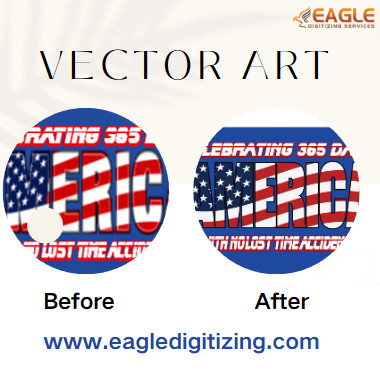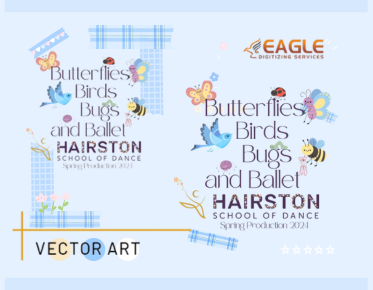How to thread your budget with the Embroidery Software Price Guide?
Embroidery software plays a pivotal role in the modern
textile industry, enabling designers to create intricate and captivating embroidery designs with ease. However, understanding
the pricing dynamics of embroidery software is crucial for businesses and
hobbyists alike. In this article, we'll delve into the factors that contribute
to embroidery software costs, key features to consider when choosing software,
and essential tips for making an informed decision.
Understanding
the Cost of Embroidery Software
Embroidery software is a culmination of advanced technology, creative
tools, and meticulous development processes. Its pricing reflects the
investment required to create and maintain such sophisticated software
solutions. Let's explore the various factors that contribute to the high cost
of embroidery software.
Factors
Contributing to High Cost
Investment in Research and
Development
Embroidery software companies invest heavily in
research and development (R&D) to stay at the forefront of technological
advancements. This investment encompasses exploring new design techniques,
enhancing user experience, and integrating innovative features that cater to
the evolving needs of designers.
Complexity of Software
Development
The development of embroidery software is inherently complex,
involving intricate algorithms, precise stitching techniques, and compatibility
with a wide range of embroidery machines.
Skilled software engineers and designers work tirelessly to ensure the
software's functionality, reliability, and user-friendliness, contributing
significantly to its cost.
Licensing and Copyright Fees
To incorporate proprietary technologies, third-party integrations, and
licensed designs into embroidery software, companies must pay licensing and
copyright fees. These fees add to the overall cost of the software and are
essential for maintaining legal compliance and intellectual property rights.
Quality Assurance and Testing
Robust quality assurance (QA) processes are fundamental to embroidery
software development. Extensive testing, bug fixing, and performance
optimization are carried out to deliver a seamless and error-free user
experience. The costs associated with QA efforts contribute to the software's
pricing.
Integration with Hardware and
Software
Embroidery software must seamlessly integrate with a diverse array of
embroidery machines, operating systems, and design formats. Achieving
compatibility and interoperability requires ongoing development and testing
efforts, impacting the software's cost.
Marketing and Distribution
Expenses
Bringing embroidery software to the market involves comprehensive
marketing strategies, promotional campaigns, and distribution logistics. These
expenses, including advertising, trade shows, packaging, and digital
distribution platforms, are factored into the software's pricing.
Economic Factors Impacting
Pricing
Market
Demand and Competition
Market demand and competitive landscape play a significant role in
determining embroidery software prices. High demand for advanced features,
coupled with competition among software providers, can lead to competitive
pricing strategies or premium pricing for software with unique capabilities.
Economies
of Scale in Production
As embroidery software gains popularity and adoption, companies may
benefit from economies of scale in production. Larger customer bases and
increased sales volumes can lead to cost efficiencies that may be reflected in
pricing models.
Supply
Chain Costs and Logistics
The logistics of software production, distribution, and support incur costs related to manufacturing, packaging, shipping, and customer service. Efficient supply chain management helps mitigate these costs but still influences the overall pricing structure.
Key
Features to Consider When Choosing Embroidery Software
Selecting the right embroidery software involves evaluating key
features that align with your design needs, technical requirements, and budget.
Here are essential features to consider when making your decision.
Compatibility with Embroidery
Machines
Ensure the software is compatible with your embroidery machine's make,
model, and specifications. Compatibility issues can hinder workflow efficiency
and design execution.
Supported File Formats
Verify that the software supports a wide range of design file formats, such as PES, DST, EXP, and more.
This ensures flexibility in importing, editing, and exporting embroidery
designs.
User Interface and Ease of Use
A user-friendly interface with intuitive navigation, tool
accessibility, and clear instructions enhances your productivity and design
workflow. Look for software that prioritizes ease of use.
Design Editing Tools and
Features
Robust design editing tools, including resizing, rotation, mirroring,
and stitch adjustments, empower you to create intricate and customized
embroidery designs with precision.
Customization Options
Software that offers extensive customization options, such as color
palette adjustments, stitch variations, and design layering, allows you to
unleash your creativity and achieve unique design outcomes.
Advanced Stitching Capabilities
Explore software with advanced stitching capabilities, such as 3D
effects, textured stitches, appliqué options, and specialty thread effects, to
add depth and complexity to your designs.
Support and Maintenance
Evaluate the software provider's support and maintenance offerings,
including technical support availability, frequency of updates, bug fixes, and
access to user resources like tutorials and forums.
Price vs. Value: Finding the
Right Balance
Comparing
Costs and Features
When comparing embroidery software options, consider the balance
between costs and features. Higher-priced software may offer advanced
capabilities and comprehensive support, but it's essential to assess its value
proposition for your specific needs.
Assessing
Long-Term Benefits
Look beyond immediate costs and assess the long-term benefits of
embroidery software. Consider factors such as productivity gains, design
quality improvements, and scalability for future projects.
Considering
Your Specific Needs and Budget
Your unique design requirements, technical preferences, and budget constraints should guide your software selection. Prioritize features that align with your needs while staying within your budgetary limits.
Tips
for Choosing the Best Embroidery Software
Understanding the Importance of
Choosing the Right Embroidery Software
Embroidery software serves as the backbone of your embroidery
projects, influencing everything from design creation to stitch precision.
Selecting the right software ensures seamless workflow, enhanced creativity,
and superior output quality.
Factors to Consider When
Choosing Embroidery Software
Compatibility
with Your Embroidery Machine
Ensure that the software is compatible with your embroidery machine
model to facilitate smooth design transfer and embroidery process.
Supported
File Formats
Look for software that supports a wide range of file formats, allowing
you to import and export designs in various formats for versatility and
compatibility.
User
Interface and Ease of Use
Opt for software with an intuitive user interface and user-friendly
navigation tools to streamline your design workflow and minimize learning
curves.
Design
Editing Tools and Features
Evaluate the software's design editing capabilities, including tools
for resizing, rotating, mirroring, and adjusting stitch parameters to customize
your designs.
Customization
Options
Choose software that offers ample customization options, such as the
ability to create custom thread palettes, stitch effects, and lettering styles
for personalized embroidery projects.
Advanced
Stitching Capabilities
Consider software that provides advanced stitching techniques, such as
specialty stitches, 3D effects, appliqué, and sequin embellishments, for
creative versatility.
Support
and Maintenance
Prioritize software vendors that offer comprehensive support and
maintenance services, including technical assistance, regular updates, and bug
fixes, to ensure smooth operation and optimal performance.
Technical
Support Availability
Assess the availability and responsiveness of technical support
channels, such as email, phone, or live chat, to address any issues or queries
promptly.
Frequency
of Updates and Bug Fixes
Choose software that receives regular updates and bug fixes to address
software issues, enhance functionality, and incorporate new features based on
user feedback.
Community
and User Resources
Join online forums, user groups, and social media communities associated with the software to connect with fellow users, share tips and tricks, and access valuable resources and tutorials.
Price vs. Value: Finding the
Right Balance
Comparing
Costs and Features
Balance the cost of the software with its features and capabilities to
determine the overall value proposition and return on investment.
Assessing
Long-Term Benefits
Consider the long-term benefits of the software, such as productivity
gains, design versatility, and scalability, when evaluating its worth.
Considering
Your Specific Needs and Budget
Align the software's features and pricing with your specific embroidery requirements and budget constraints to make a practical and cost-effective choice.
Top
Free Embroidery Software Programs
Let's explore some of the top free embroidery software programs
available:
Embroidermodder 2
Embroidermodder 2 boasts a plethora of features and functionalities
that cater to both novice and experienced users. Its intuitive user interface
makes it easy to navigate, while advanced tools offer flexibility and precision
in design.
Ink/Stitch
Key features of Ink/Stitch include its compatibility with various
embroidery machines and its robust editing capabilities. Whether you're
stitching a simple logo or a complex design, Ink/Stitch delivers exceptional
results.
SewArt
SewArt stands out for its comprehensive set of tools and editing
capabilities. Users can manipulate designs with ease, thanks to features like
stitch editing and automatic image conversion. Plus, SewArt supports a wide
range of file formats, ensuring compatibility with different embroidery
machines.
My Editor
My Editor prioritizes customization and user-friendliness. With a
range of editing options and a straightforward interface, users can bring their
embroidery visions to life with ease.
SophieSew
SophieSew offers unique features and tools that set it apart from other embroidery software programs. Community support and resources further enhance the user experience, making it a valuable tool for both beginners and experts alike.
Comparison of Free Embroidery
Software Programs
When choosing the right embroidery software, consider factors such as
ease of use, compatibility with different operating systems, and advanced
features. Each program has its strengths and limitations, so it's essential to
weigh your options carefully.
Tips for Using Free Embroidery
Software
To make the most
of your free embroidery software experience, keep these tips in mind:
● Familiarize
yourself with the user interface: Take the time to explore the various tools
and features available in your chosen software.
● Experiment with
different design elements: Don't be afraid to get creative and try out
different stitches, colors, and patterns.
● Utilize online tutorials and guides: Take advantage of the wealth of resources available online, from video tutorials to step-by-step guides.
Embroidery software is a valuable tool for designers, businesses, and enthusiasts seeking to create stunning and intricate embroidery designs. And eagle digitizing provides embroidery digitizing services, which can further enhance the process. By understanding the factors influencing pricing, evaluating key features, and following best practices for selection, you can invest in quality embroidery software that enhances your creative projects.
Take the next step in your embroidery journey by
researching, comparing, and selecting the best embroidery software for your
needs. Make an informed decision that aligns with your design aspirations,
technical requirements, and budgetary considerations to elevate your embroidery
projects.


